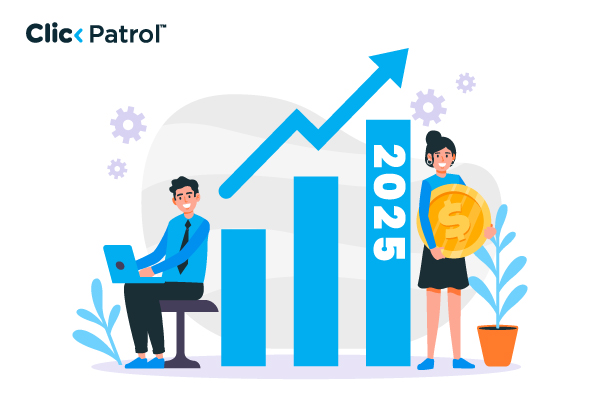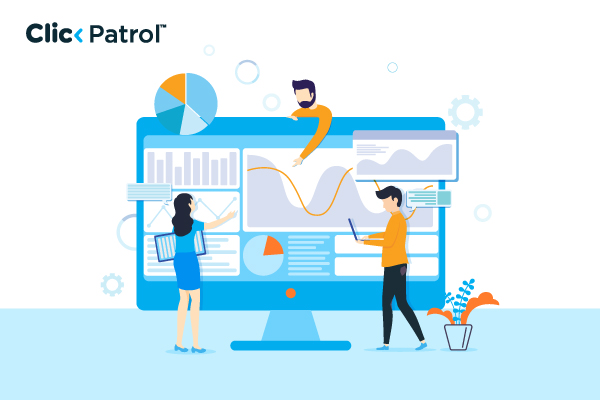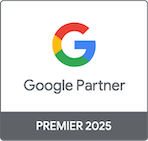3-7 exposures for upper-funnel goals, with diminishing returns thereafter.
How frequency capping reduces wasted ad impressions and boosts ROI in 2025
Abisola Tanzako | Nov 07, 2025

Table of Contents
- The true cost of wasted ad impressions for advertisers
- Understanding bad ad placements: The major driver of wasted ad impressions and lost revenue
- Frequency capping explained: The key to reducing ad waste and overexposure
- Advanced frequency capping strategies for ad placements
- Measuring success: KPIs for frequency-capped campaigns
- Real-world impact: how ClickPatrol turns frequency capping into ROI
- How ClickPatrol eliminates wasted ad impressions
- Maximizing ad efficiency: How to reduce wasted impressions and boost ROI
Wasted ad impressions, those fleeting online moments when your ad appears on a screen without sparking interest, interaction, or conversion, burn budgets and erode campaign performance.
At least 12% of global ad spend is a waste, industry data now confirms, due to misaligned technology and misplaced spend.
For most marketers, this translates to billions of dollars in lost opportunities annually. But there is a proven solution: frequency capping.
By deliberately capping how often each user views your ads, frequency capping not only reduces waste but also increases relevance, thereby maximizing ROI.
In this article, you will learn how frequency capping combats wasted impressions, optimizes reach, and protects ROI, plus how ClickPatrol’s automation turns insight into real savings.
The true cost of wasted ad impressions for advertisers
Wasted ad impressions are a growing plague in today’s fragmented digital landscape, sucking up budgets and skewing metrics.
- Invalid traffic cost advertisers globally $54.63 billion in 2022 alone and was projected to reach $72 billion in 2024.
- A study of more than 1,000 marketers found that 26% of budgets are lost to irrelevant channels due to uncontrolled impression sprawl.
- Programmatic makes the problem worse; in 2023, 15% of the $88 billion spent went to made-for-advertising sites pages designed to harvest impressions, not involve users.
- Wasted impressions taint metrics like CPM and CTR, leading to incorrect optimizations. When the percentage of relevant impressions is as low as 1 in 1 million, scaling decisions fail, and campaigns lose their confidence.
- Bad placements also pose a threat to brand reputation, showing up next to suspicious content, and unmonitored impressions make it harder to comply with GDPR and CCPA.
Understanding bad ad placements: The major driver of wasted ad impressions and lost revenue
Bad ad placements, ads shown on the wrong sites, apps, or pages, are another major cause of wasted impressions.
While not fraudulent, these “legal” misplacements quietly drain budgets by serving ads in environments that don’t match your target audience or brand.
In Q1 2022, Asia-Pacific retail lost $31.9 million due to poor channel alignment. Globally, 18% of 2021 U.S. programmatic impressions were low-quality, often traced back to weak placements.
By 2023, 15% of programmatic spend was diverted to made-for-advertising (MFA) sites, pages designed for ad density rather than user experience.
Why is it so prevalent?
Massive daily impression volumes overwhelm quality control, while opaque supply chains make it hard to trace where ads actually appear. Programmatic algorithms often prioritize cheap fills over contextual relevance.
The result?
Marketers lose up to 26% of their budgets to mismatched inventory and unreliable A/B tests. These misplaced ads cause fatigue, frustration, and brand dilution instead of engagement.
ClickPatrol exposes such inefficiencies, from pixel stuffing to bot-run sites, and has found cases where clients received over 40% of their impressions as irrelevant. Its approach helps eliminate low-quality placements and ensures ads appear on viable, value-driven sites.
Frequency capping explained: The key to reducing ad waste and overexposure
Frequency capping limits how often a user sees your ad, helping you reach more people without wasting impressions.
Policies like “3 impressions per day” or “5 per week” ensure balance, enough visibility to build awareness without causing fatigue.
Platforms such as Google Ads and DSPs use cookies, device IDs, or first-party data to maintain this precision, even in a cookieless environment.
Without capping, ads quickly become noise. Seeing the same ad 20 times per session frustrates users and drains budgets.
Research from eMarketer shows that 3–7 exposures deliver the strongest upper-funnel results, and 30% of CTV buyers say better capping would make them spend more by preventing overload.
Beyond user experience, frequency capping helps reduce bad placements, preserve budget for premium inventory, improve measurement accuracy, and limit unnecessary data capture for privacy compliance.
Start with platform defaults, then A/B test caps (e.g., 2 vs. 5 per day) using your DSP analytics to find the best fit for your KPIs. With ClickPatrol, frequency capping goes further.
The platform pairs smart impression control with fraud detection and placement blocking, helping advertisers recover up to 20% of wasted spend from impression fraud. It is a small adjustment that delivers outsized ROI.
Advanced frequency capping strategies for ad placements
To minimize wasted ad impressions, pair frequency capping with robust placement hygiene to mount a two-front attack on overexposure and poor-quality placements.
- Start with exclusion lists and block low-performing or suspicious domains via DV360 or third-party verifiers to improve viewability and security.
- Contextual targeting maximizes effectiveness, reducing irrelevant impressions by up to 40%, according to eMarketer reports. An airline brand might cap at 4 impressions for blogs but 7 for reviews.
- Cross-channel orchestration, required by 36% of U.S. brands in 2024, brings capping together across social, display, and video using ID solutions like LiveRamp.
- Allocate 70% of the budget to capped, quality buys; hold back 30% for uncapped tests.
Measuring success: KPIs for frequency-capped campaigns
- Target sophisticated metrics: Extend beyond total impressions to the following:
- Effective impression rate: Quality served ÷ total impressions.
- Frequency-adjusted reach: Unique users reached at optimal frequency.
- Waste ratio: Over-capped impressions ÷ total impressions.
- Apply cutting-edge analytics: Solutions like Attribution.ai overlay frequency on conversions to identify “optimal exposure curves”.
- Optimize for reduction: Target 20-30% waste reduction in Q1 by aggressive capping.
- Monitor with ClickPatrol: Our real-time dashboard detects bad placement spikes for quick tweaks.
- Optimize continuously: Monitor KPIs, adjust settings, and reach campaign success.
Real-world impact: how ClickPatrol turns frequency capping into ROI
When Conservio, an eco-friendly brand, integrated ClickPatrol into its ad campaigns, it discovered that a significant portion of its budget was being lost to non-human clicks.
Within weeks, ClickPatrol helped them reduce invalid traffic by 14% and save about $1,940 in ad spend. The result was not just reduced waste, but it was also achieved.
After filtering out fake clicks, their ads reached real users more efficiently, improving engagement and conversion rates. Each impression now counted, and their effective frequency, the number of times real users saw the ad, became more accurate.
Instead of overspending or overexposing audiences, Conservio achieved better performance and a clear boost in ROI.
ClickPatrol turned what was once wasted frequency into genuine impact, proving that when ads reach the right audience the right number of times, every click adds value.
How ClickPatrol eliminates wasted ad impressions
ClickPatrol’s AI-driven system goes beyond simple blocking. It identifies low-quality or irrelevant placements in real time, prevents ads from appearing on MFA or bot-heavy sites, and applies precise frequency caps across channels.
Clients have reported 30–50% fewer wasted impressions and stronger ROAS. With seamless integrations into Google Ads and DV360, brands gain efficiency without disrupting workflows.
Maximizing ad efficiency: How to reduce wasted impressions and boost ROI
Wasted ad impressions, particularly those lost to poor placements, are not a fate; they are a solvable problem.
By using frequency capping and placement hygiene, you can move away from wasteful, general ad spending and towards focused, high-impact campaigns.
Efficiency is your competitive advantage in 2025’s competitive digital environment. Make it yours to convert impressions waste into an opportunity that drives engagement and delivers measurable results.
Make every impression count. Turn wasted impressions into measurable growth. Use ClickPatrol to intelligently cap frequency, eliminate low-quality placements, and optimize every impression for ROI.
Frequently Asked Questions
-
What is the right frequency of ad exposure?
-
How do I implement frequency capping?
Start with platform defaults, then iterate from attribution data.
A/B test caps against KPIs like view-through conversions.
-
What tools can be used to implement frequency capping?
Platforms like Google Ads, Meta, and DSPs come with built-in features.
Software like Google Analytics or DSP analytics can quantify frequency distribution.
-
Is frequency capping possible with cookieless tracking?
Yes, innovations like aggregated reporting and server-side capping are bridging gaps in cookieless tracking.






